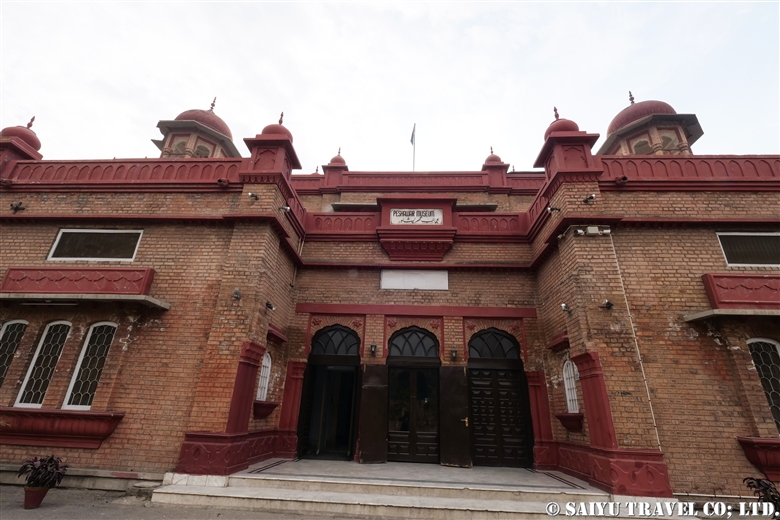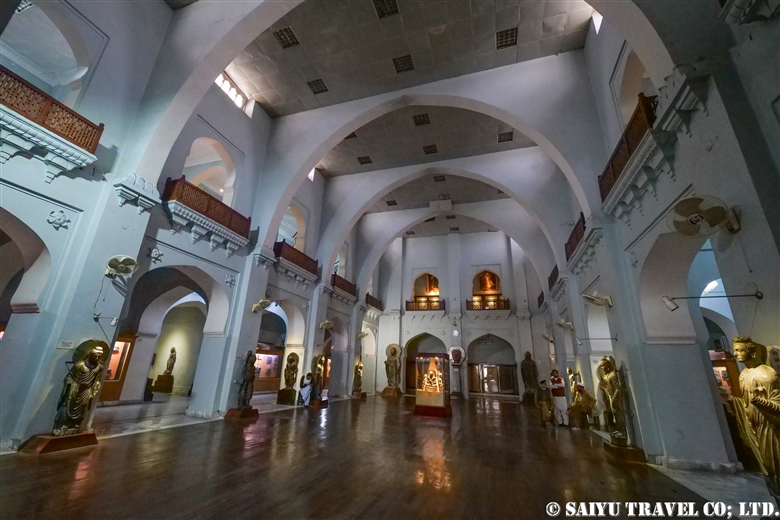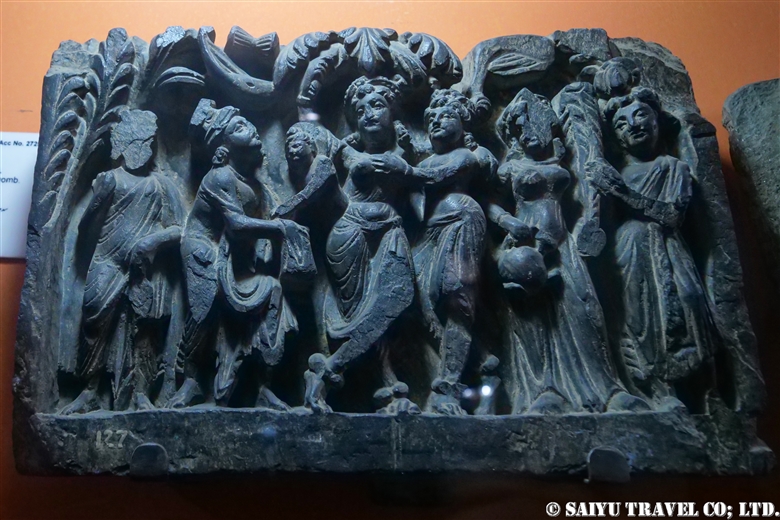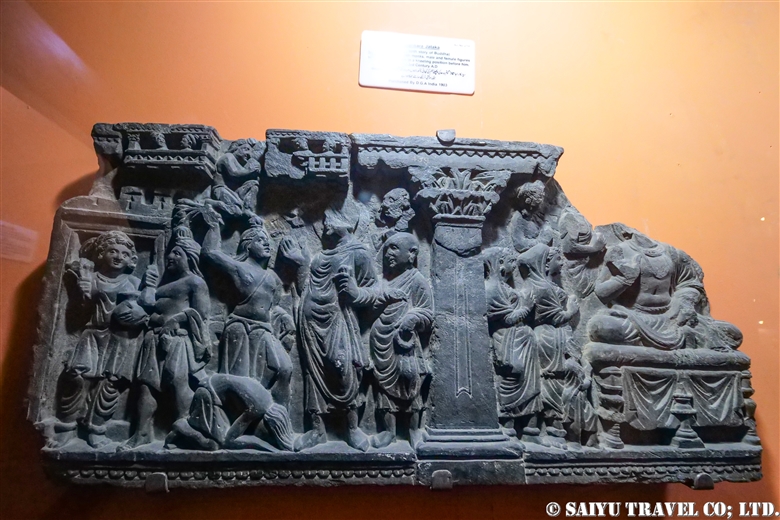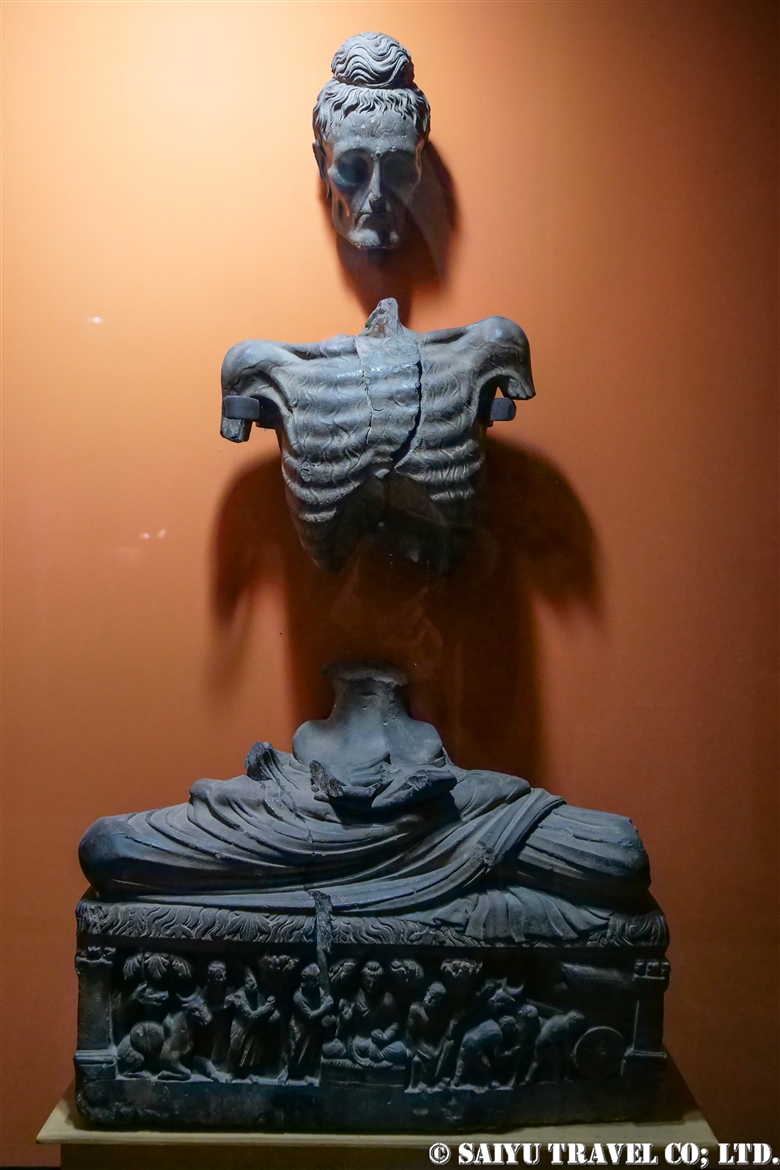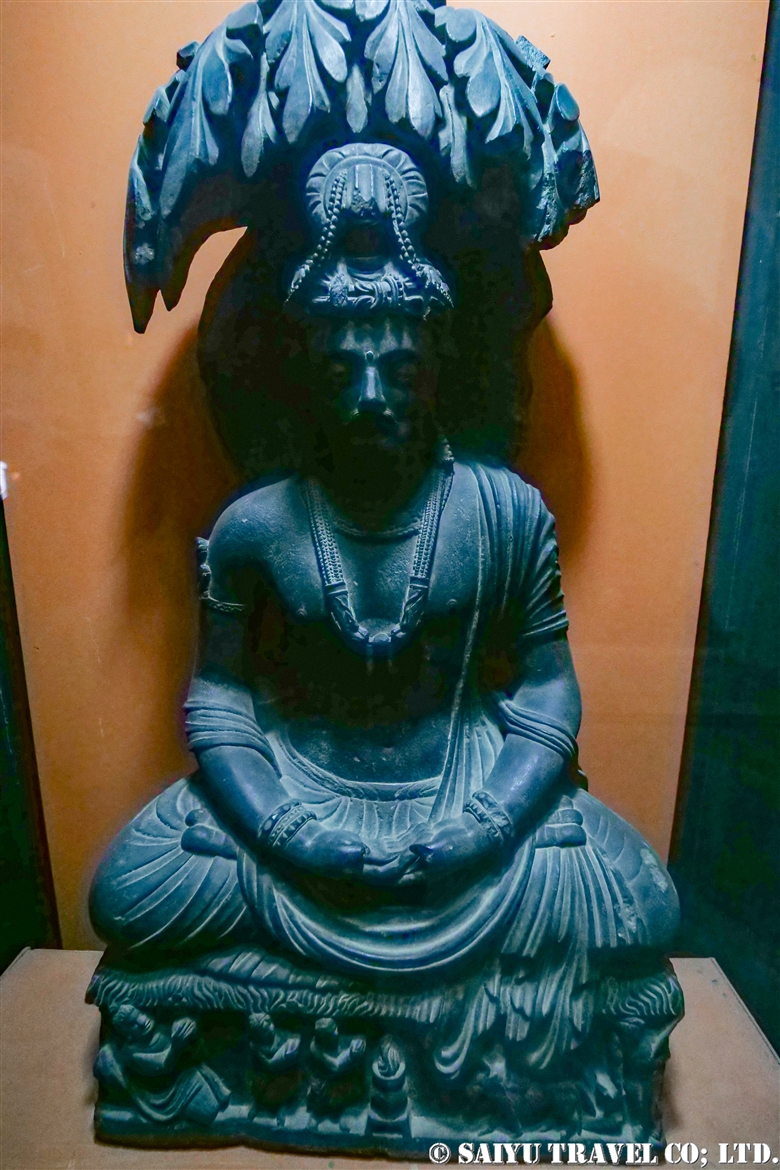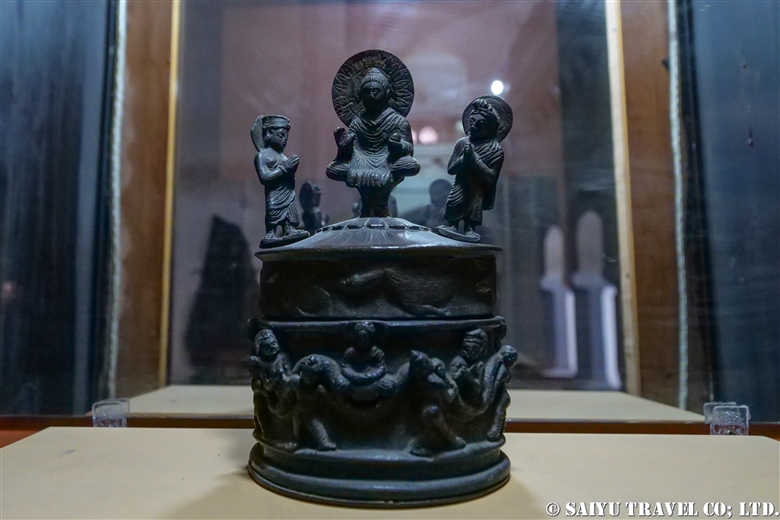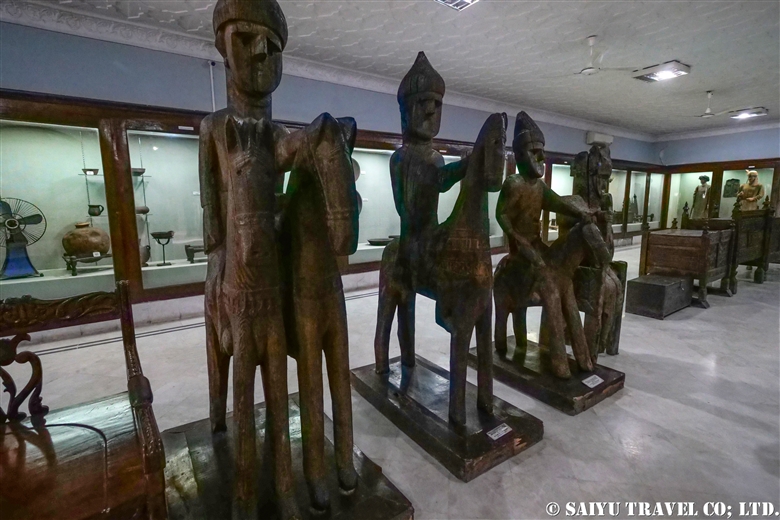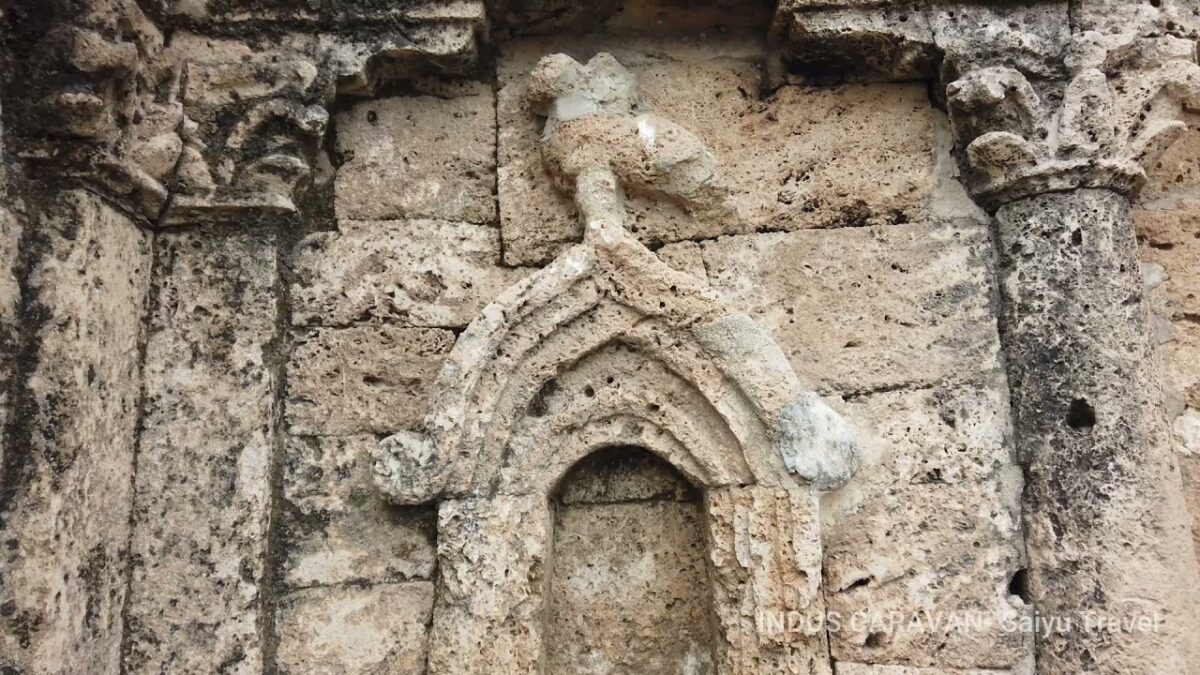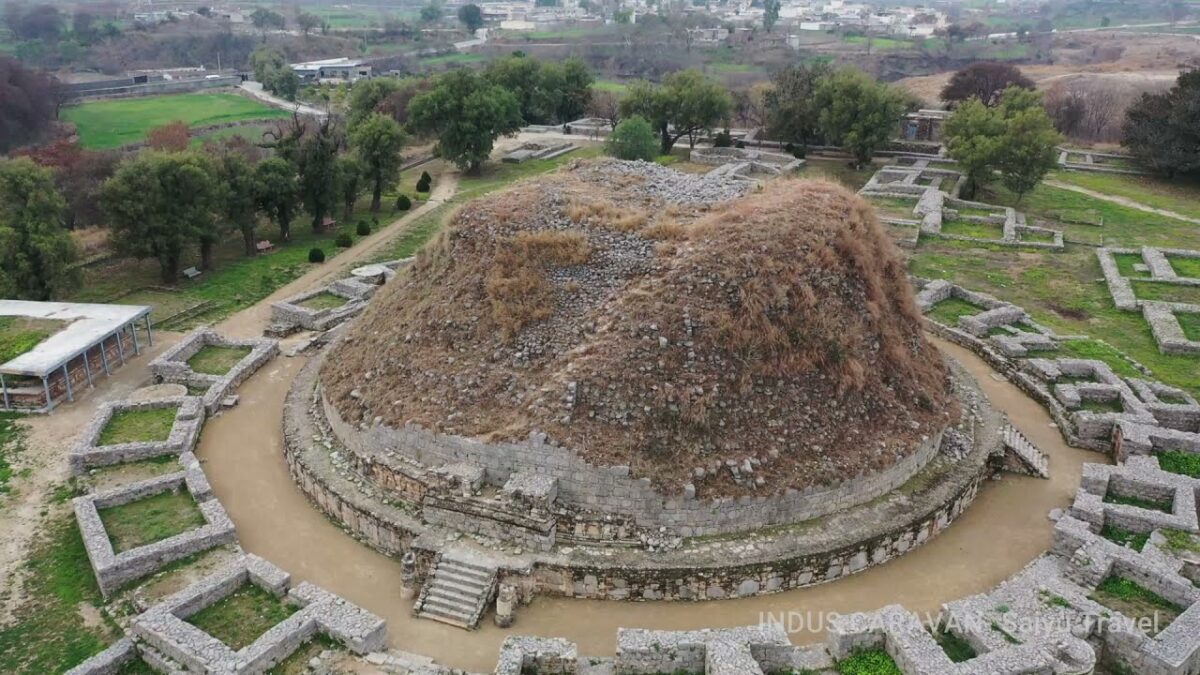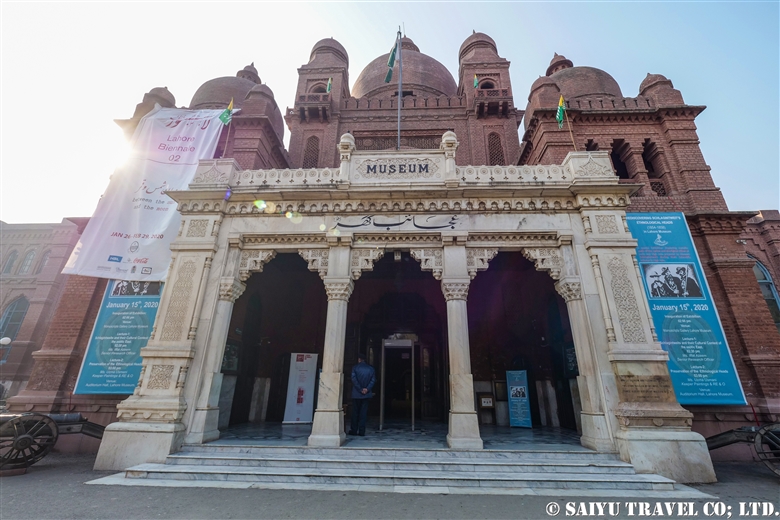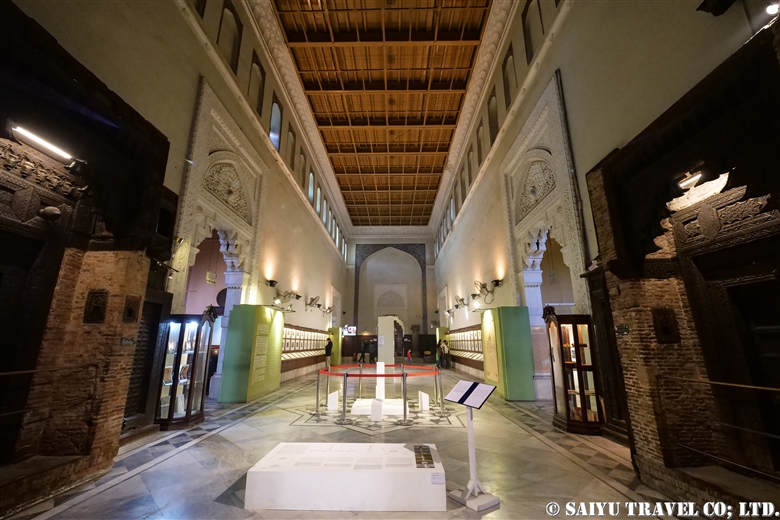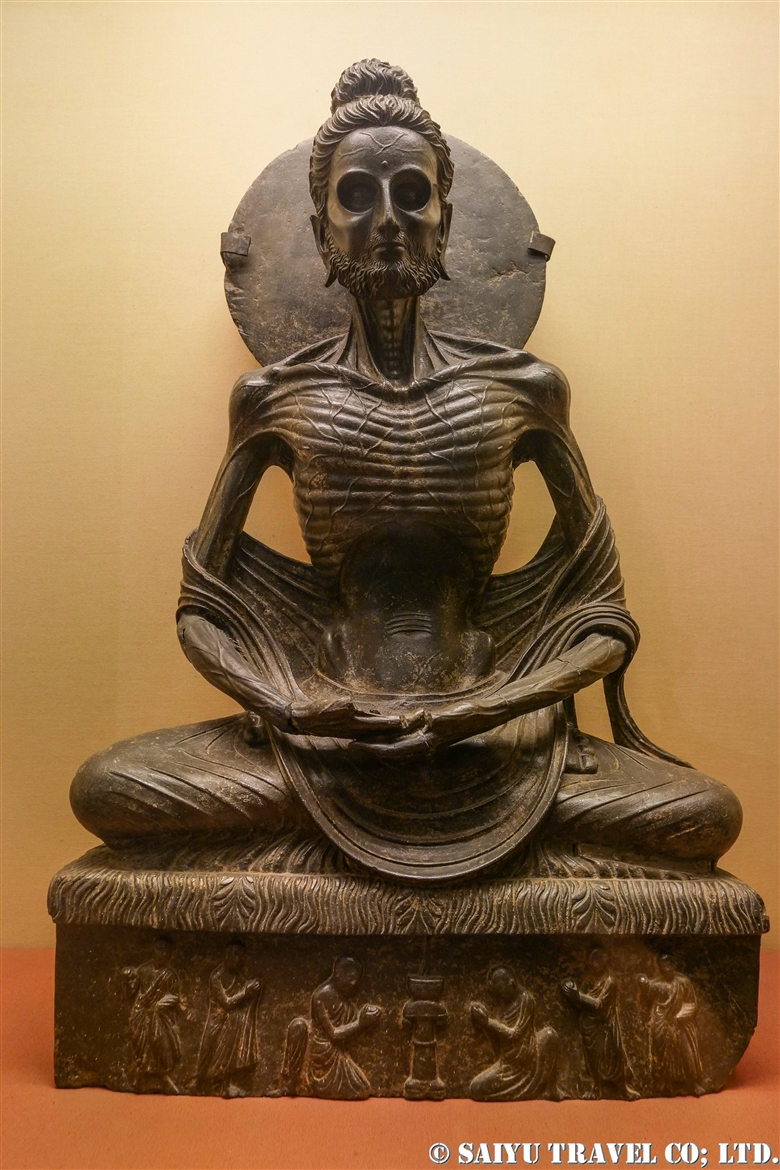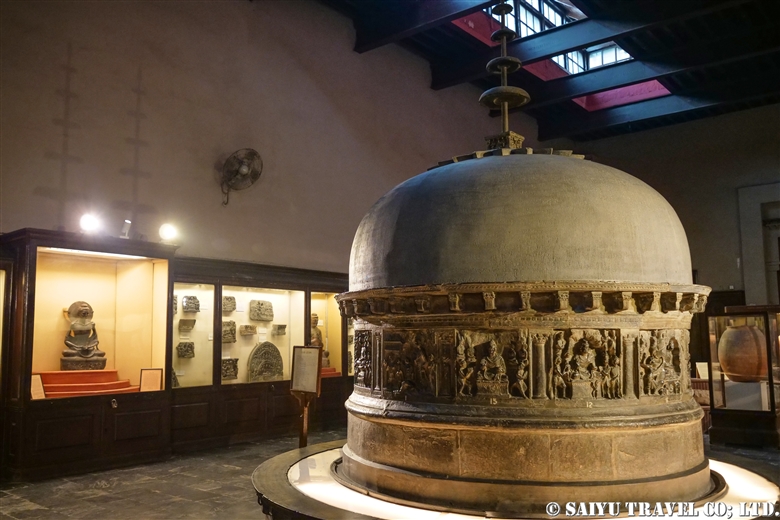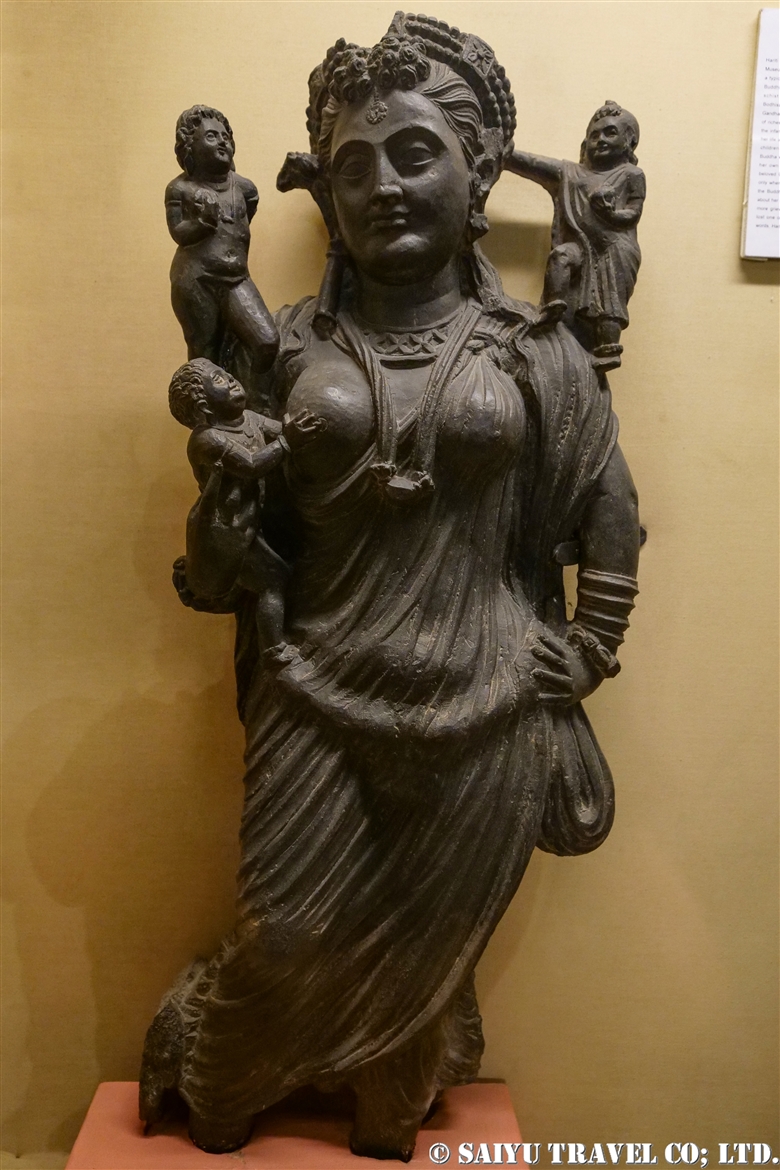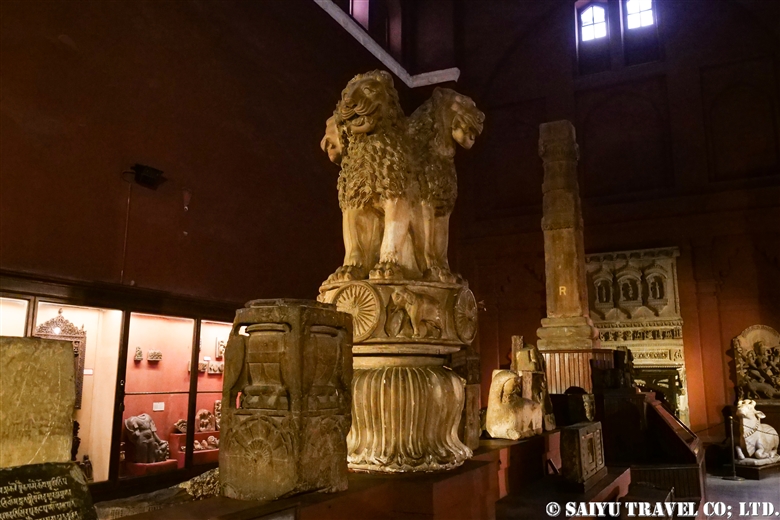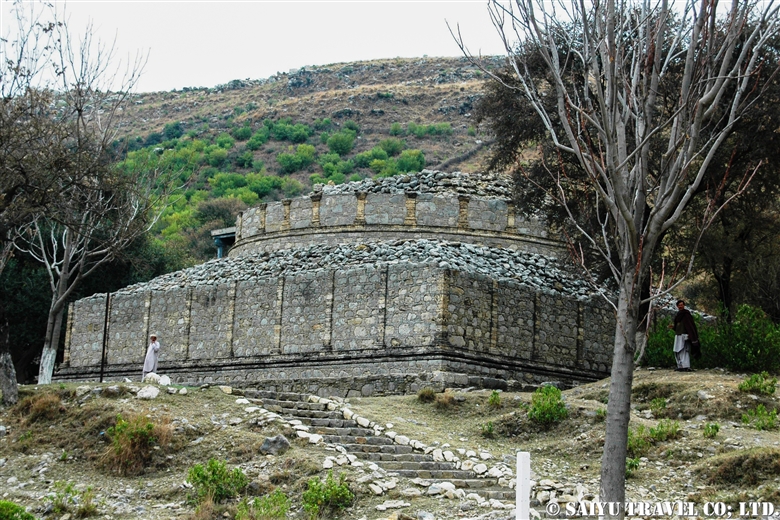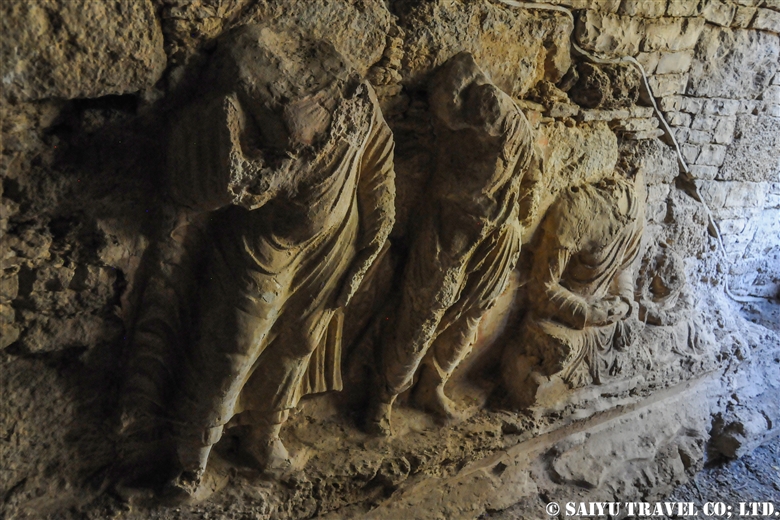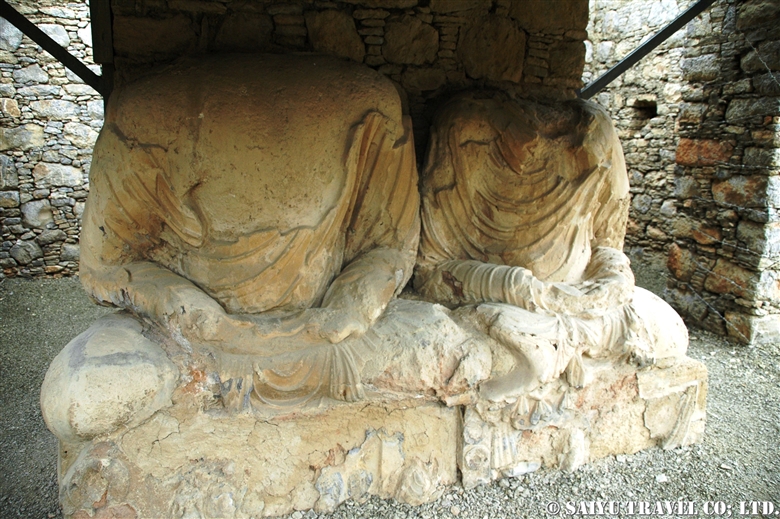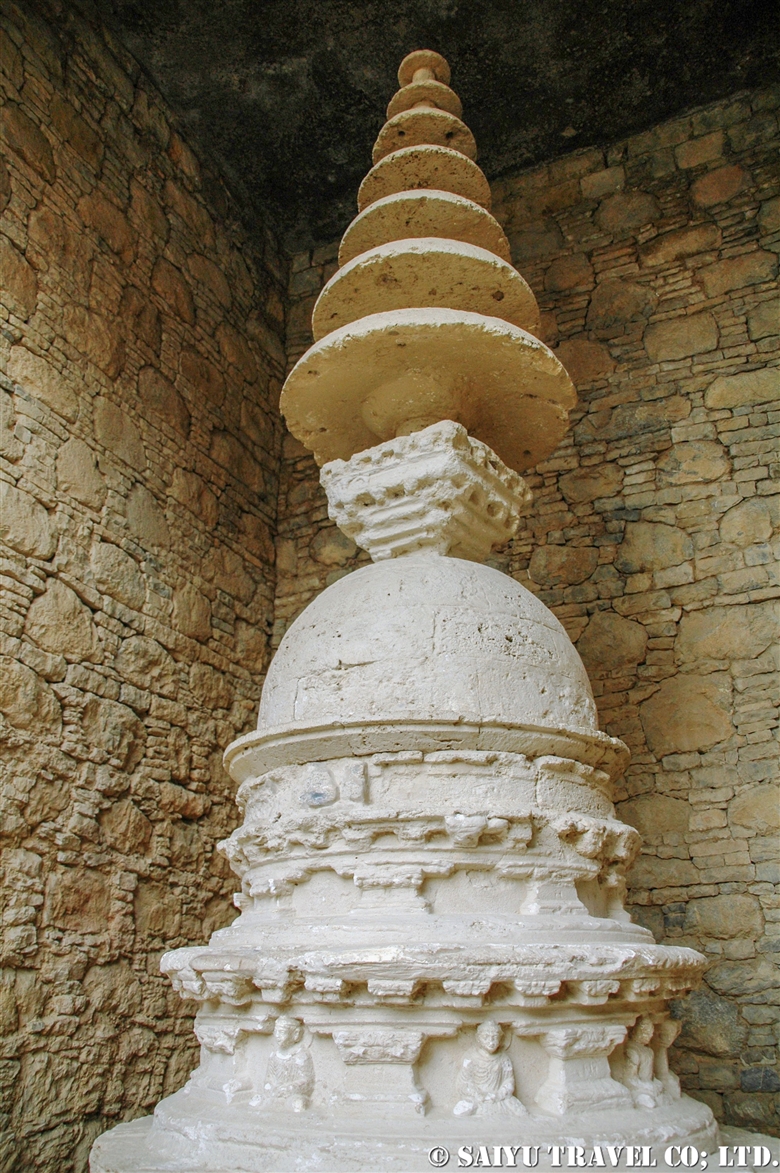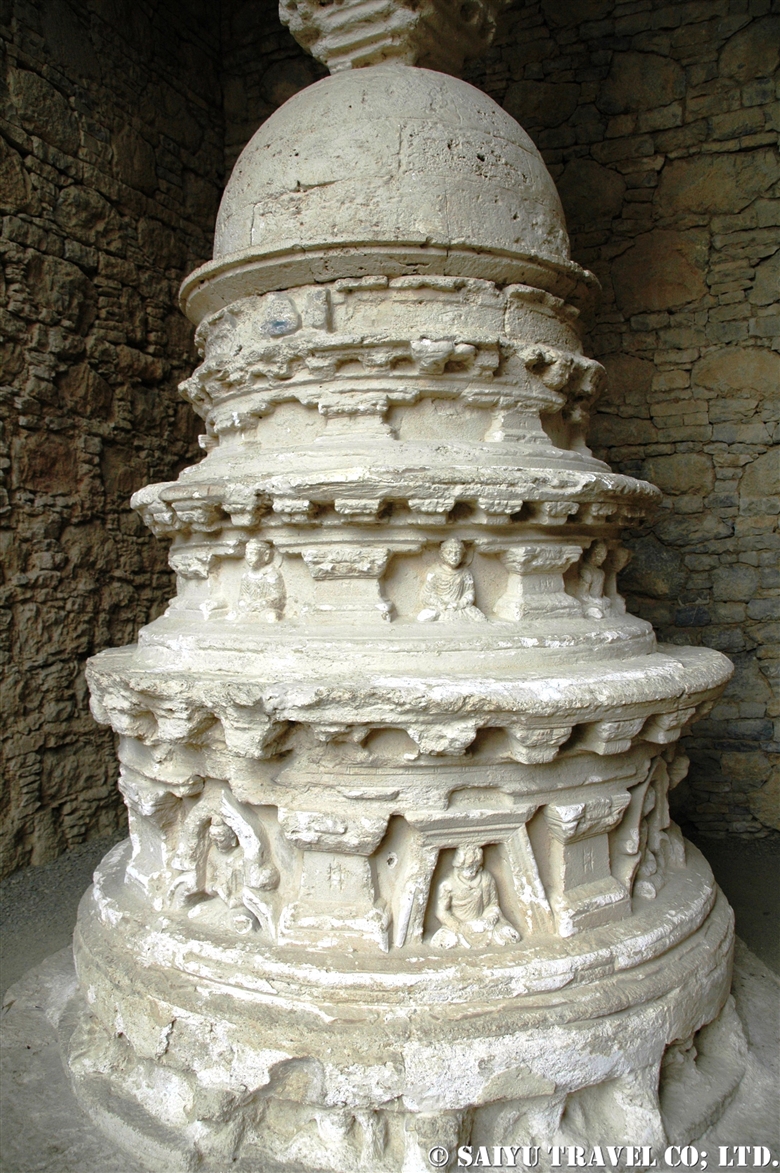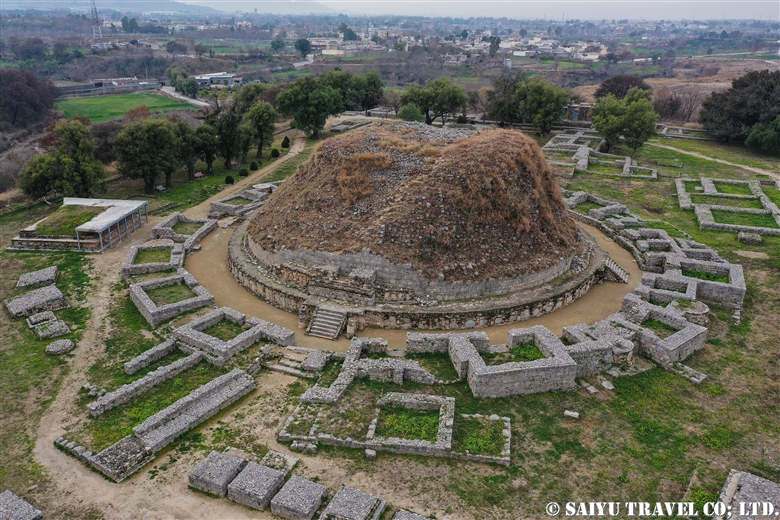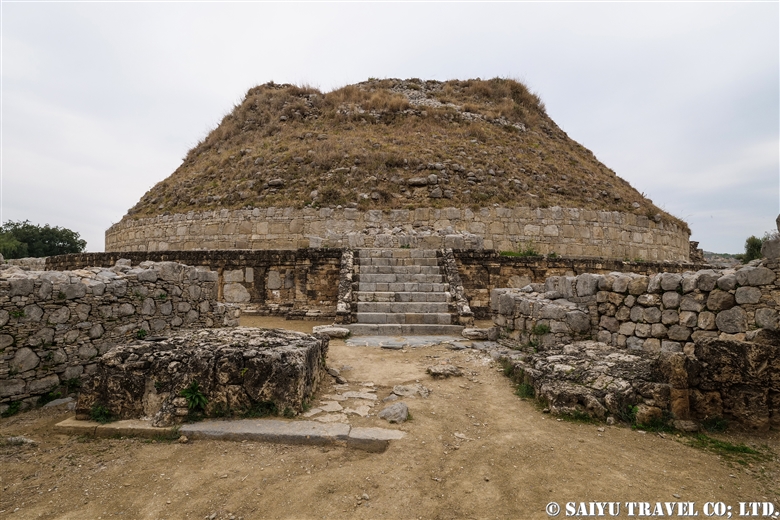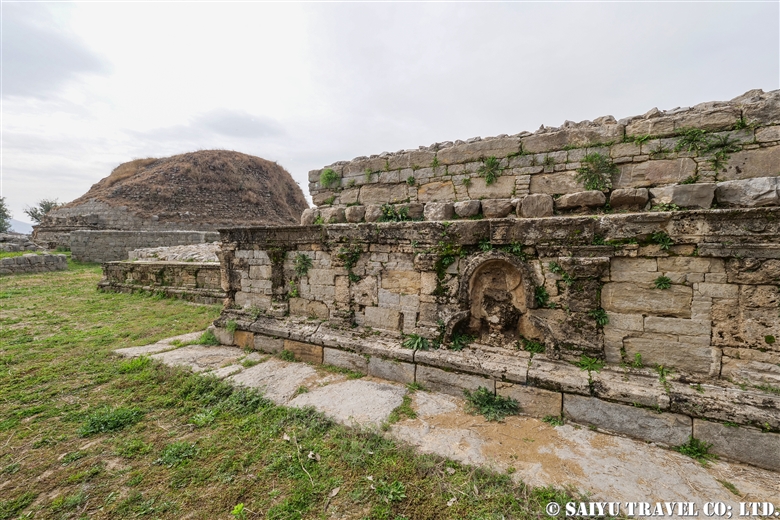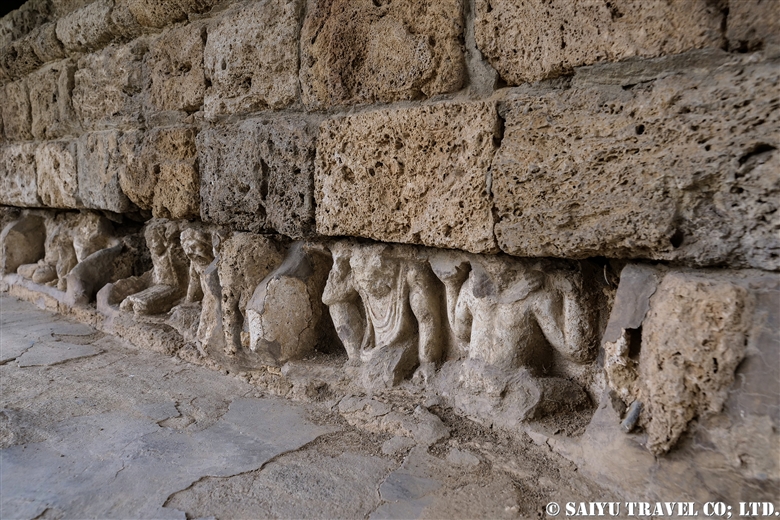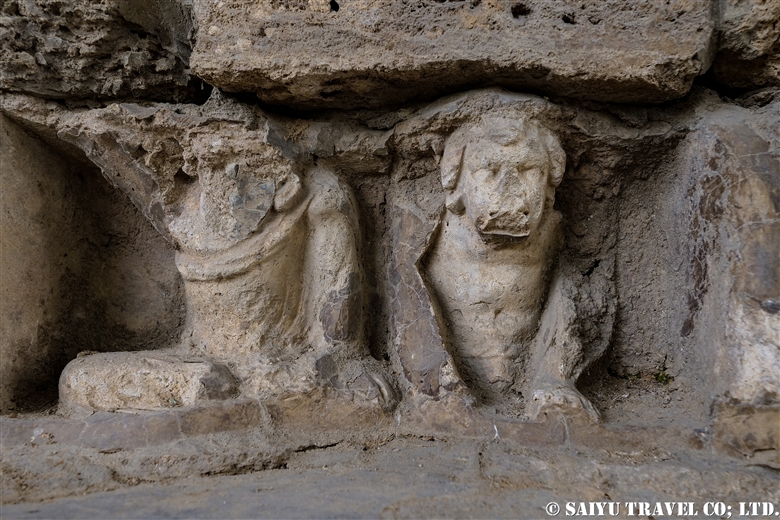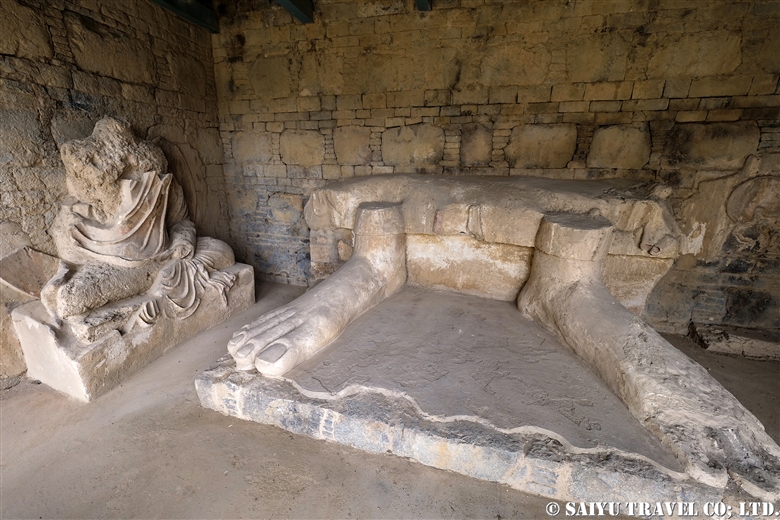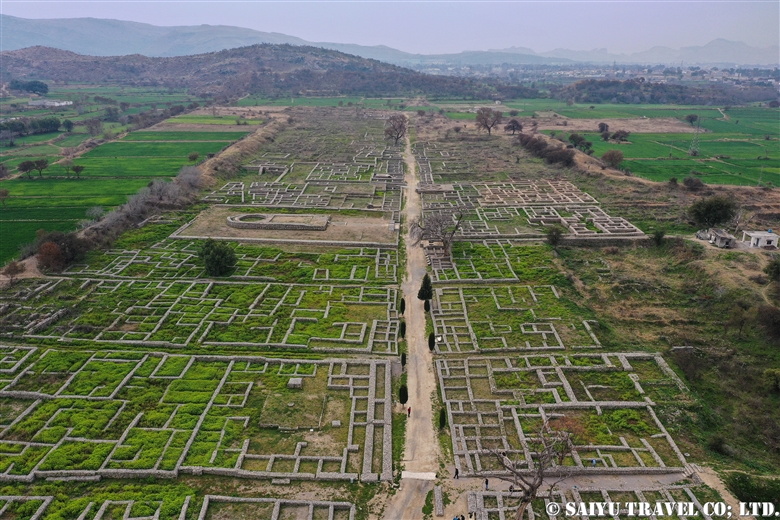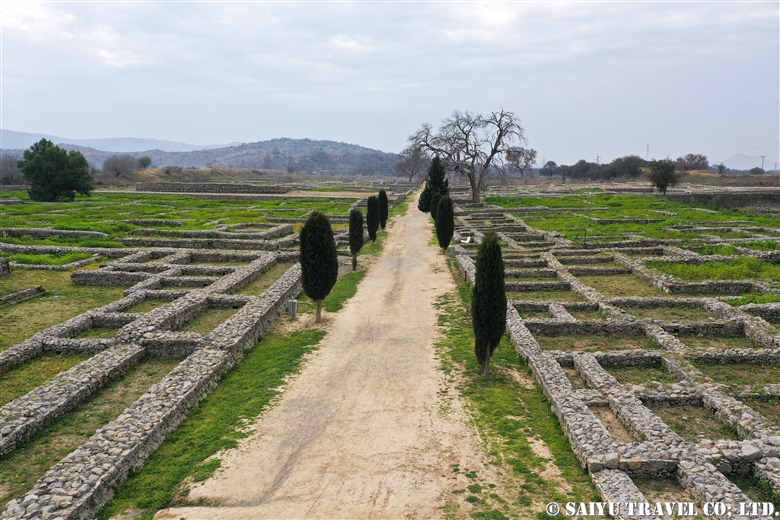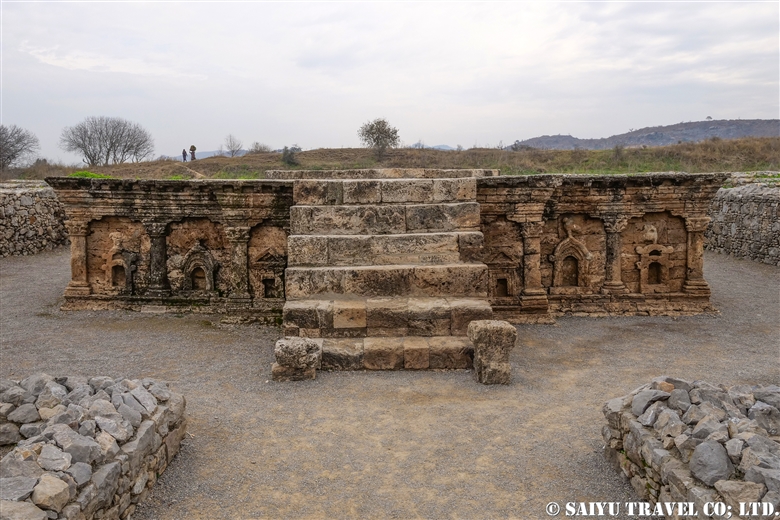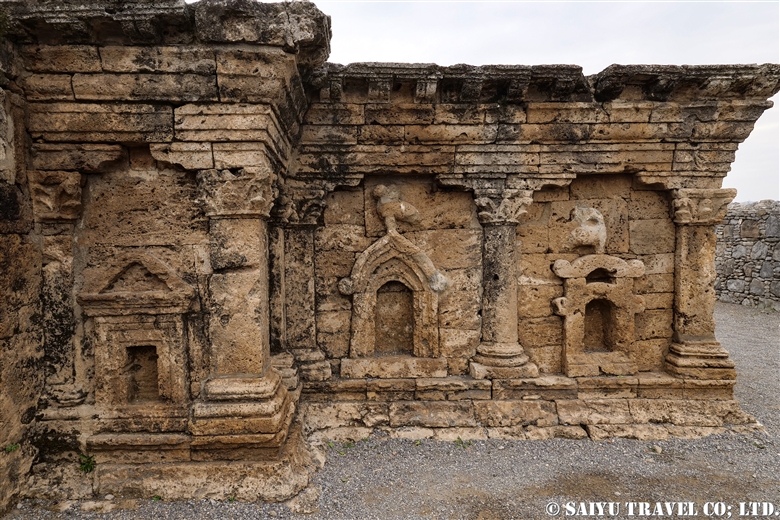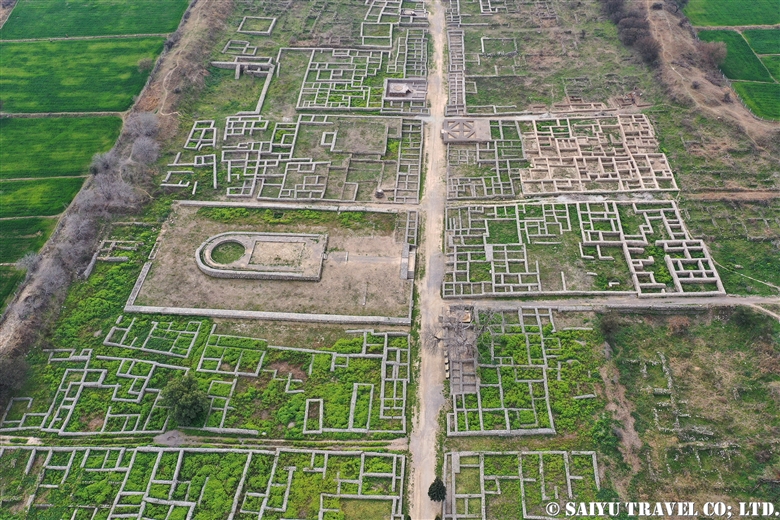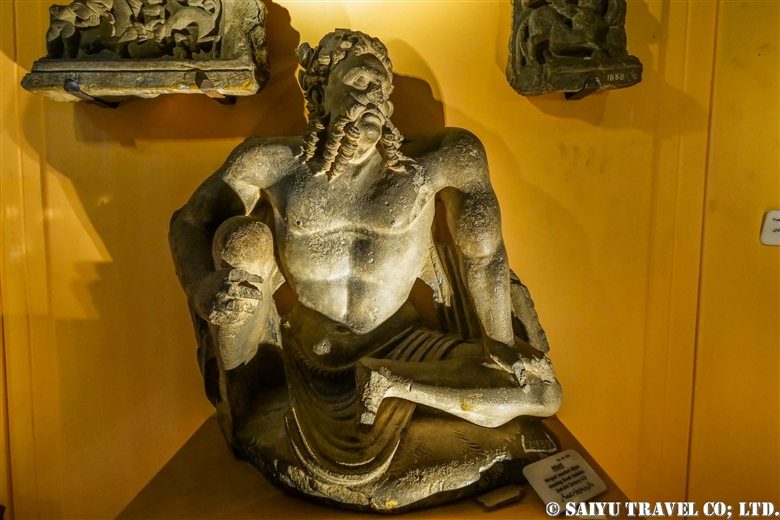
Gandhara’s art is strongly influenced by many civilizations and art influences such as Greece, West Asia, Persia (Iran), India, and more. The first Greek civilization in the 4th century BC, was brought to the Gandhara region with Alexander the Great in the Great Expedition to the East. This is when the fusion of the Greek and Orient civilizations, was born and is now called the Hellenistic civilization.
Gandhara art reached its peak in a later period, in the 1st to 5th century AD with the Kushan dynasty. Buddhism, which was born in India, so alongside the Buddhist statues met with the Western gods and elements of both were incorporated into Gandhara Buddhist art.
This sculpture is of the Greek god Atlas, that appeared in Gandhara.
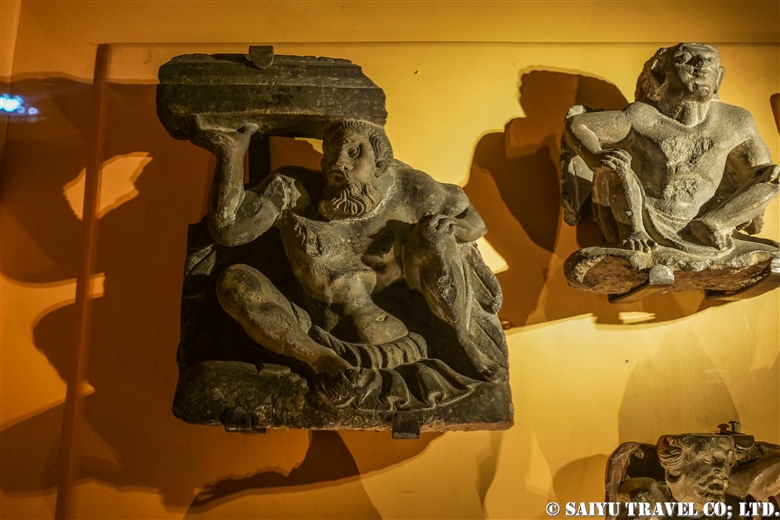
Atlas, the mythological Greek god that supports the sky at the western end of the world. In Gandhara, Atlas sits at the pedestal of the Buddha’s stupa and supports it. The Greek god that supports the Buddhist’s worldview…what a wonderful thought!
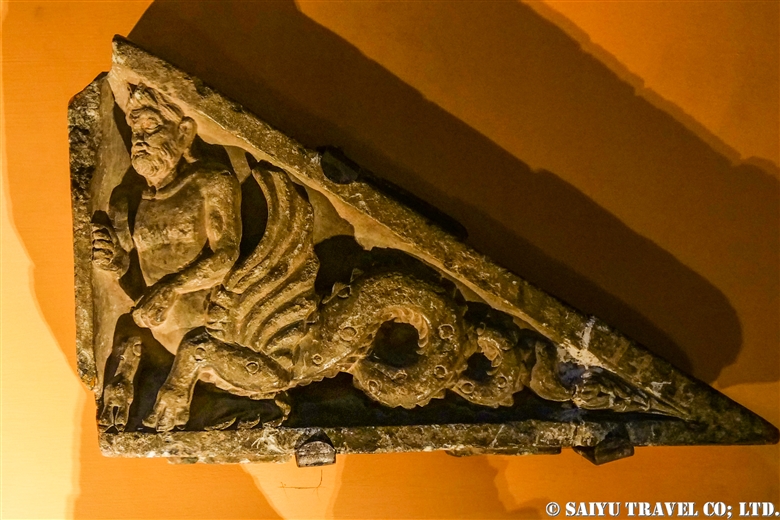
This is the Centaur, a half-horse monster that appears in Greek mythology.
The upper part of the body is human, the lower part of the body is a horse’s forelegs, and the rear part is a swirl-shaped tail fin like that of Trītōn (the son of Poseidon, the god of half-man and half-fish)
Centaur and Trītōn motifs often appear in right-angled triangular panels that are thought to have decorated the corners of buildings.
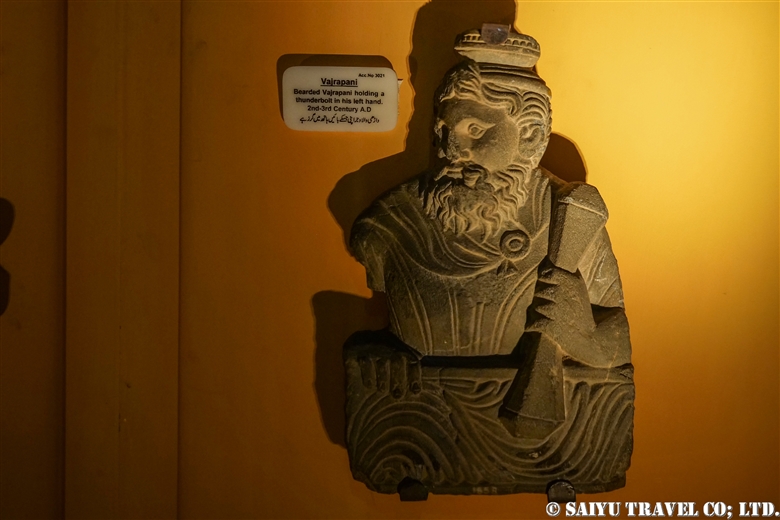
This is Vajrapāṇi (one of the Bodhisatvas in Mahayana Buddhism), who holds in his hand the Vajra (a weapon that symbolizes both the property of a diamond and a thunderbolt).
Its origin is Hercules, a hero of Greek mythology. Hercules, who assisted Kings with his awesome power, is depicted in the Gandhara as a guardian deity who is always beside the Buddha.
Hercules of Gandhara carries with him a Vajra, but the Hercules of Greece often has a club in his hands.
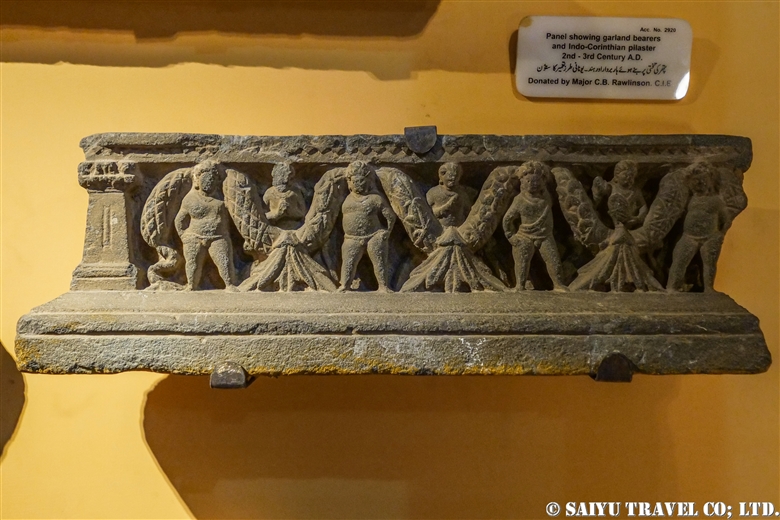
This piece shows a festoon pattern. A young man holding a wavy festoon (garland of flowers), which originated in Greece and Rome, and was very popular in Gandhara.
The cupid seems to carry the raised part of the festoon, and the lower part is decorated with grapes and a ribbon.
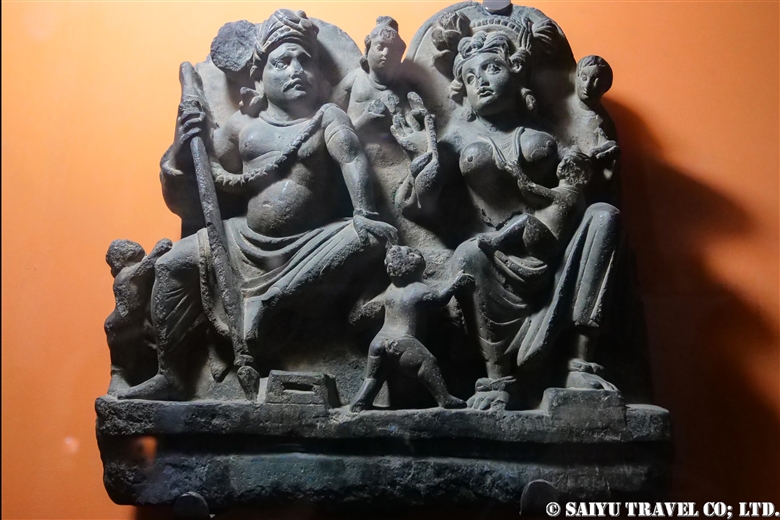
This is Hārītī and Pāñcika. Hārītī is both a goddess and a demon in the Buddhist tradition.
Hārītī was at first a cannibal demon that kidnapped and ate children. After the Buddha taught her a lesson about how parents suffer from the loss of their children, she became a “protector of children” and started to love both her own children and all others. In addition, since Hārītī had about 500 or 1,000 of her own kids, she is also a “guardian of safe childbirth.” She adorns pomegranate flowers on her hair, which is also a symbol of “fertility.”
This Hārītī looks like a Greek goddess, because it is based on the goddess of fate, Tȳchē in Greece.
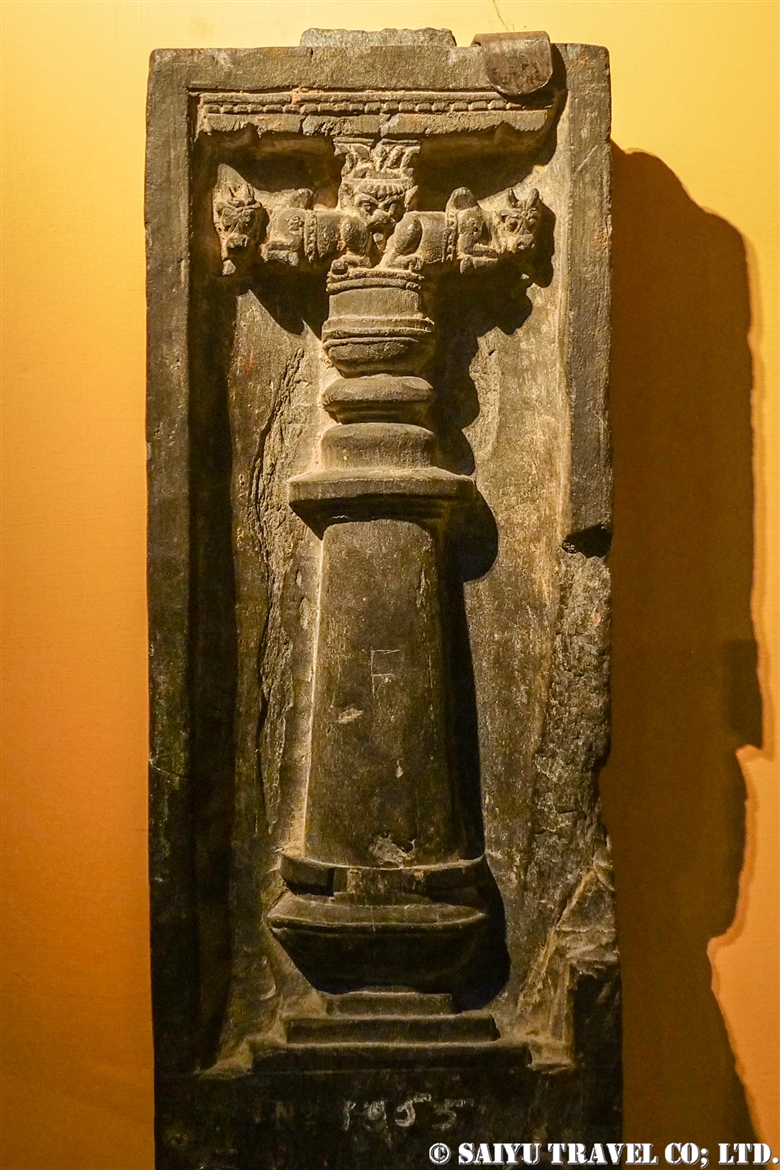
The style of pillars that appear in Gandhara is generally the Greek Corinthian style decorated with acanthus leaves. However, the one pictured is another style that you might see in Gandhara.
At the top of the column, two humped cows are placed back to back, with (what is thought to be) a lion’s head in the middle of the design. This is the principle style of the capital (topmost part of the column) of ancient Persia (Iran) and can be seen in the ruins of Persepolis.
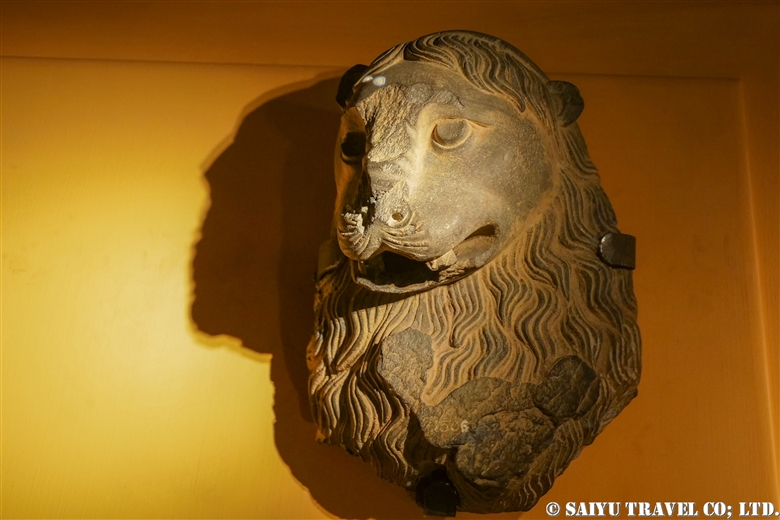
And this animal is a lion. Maybe you might think that a lion is an African animal, but at that time, there were “Asian lions” in Pakistan.
The relief of “the Lion Hunt” drawn on the ruins of Mesopotamia and the lion drawn on the ruins of Persepolis in Iran are famous, but this example is a lion in Gandhara art.
Although the wild Asian lions are now extinct in Iraq, Iran and Pakistan, they still live in the forests of Sasan Gir National Park, in Gujarat, India. There are about 500 of them!
Photo & text: Mariko SAWADA
(The photos are from a trip in Oct 2019 – Feb 2020)
Location: Peshawar Museum, Peshawar, Khyber Pakhtunkhwa
Tag : Pakistan Blog , Peshawar , Pakistan Travel Blog , Pakistan Heritage Tour , Indus Caravan , Saiyu Travel , Gandhara tour , Saiyu Travel Pakistan , pakistan buddhist ruins , pakistan buddhist tour , Unesco World Heritage Pakistan , Gandhata , Pakistan Travel company , Gandhara Art , Peshawar Museum , Pakistan Photography Tour






